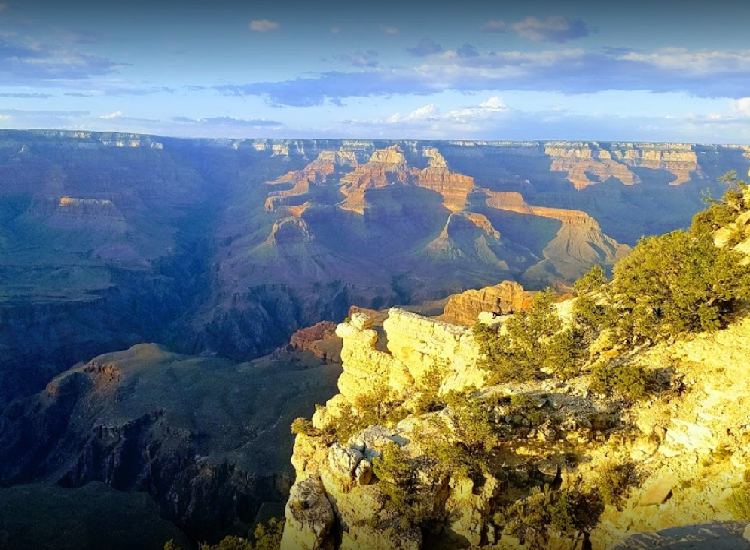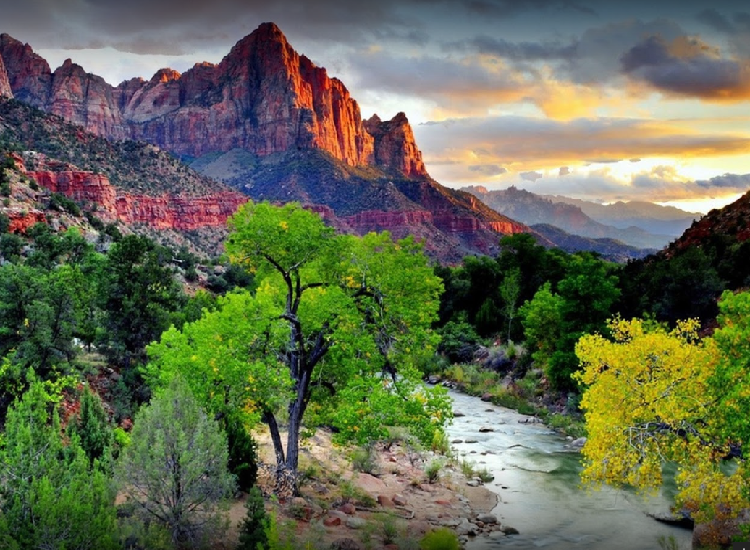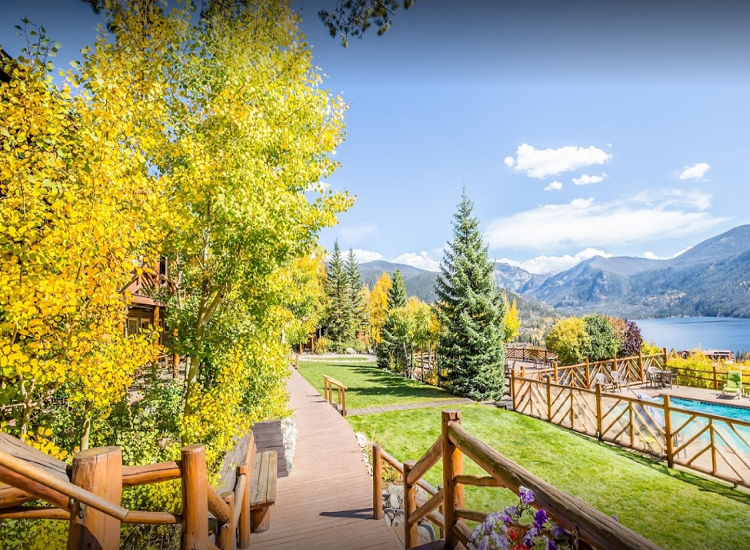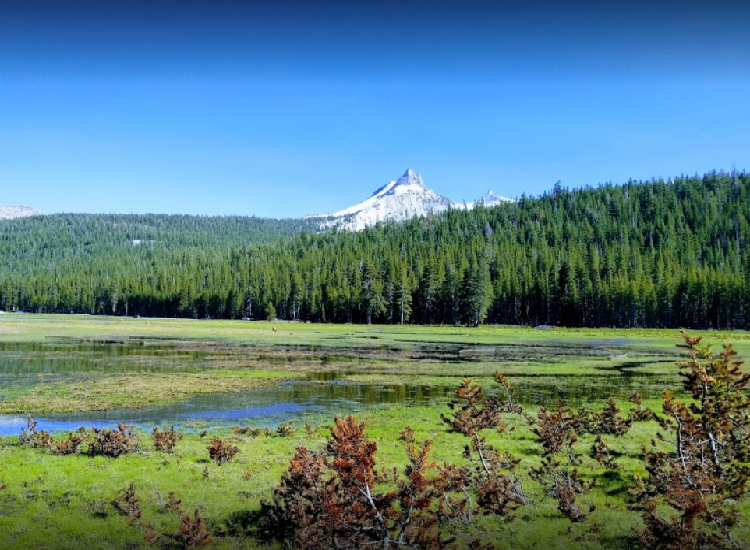60 Beautiful National Parks in the United States. The USA has 60 protected areas known as national parks which are controlled by the National Park Service, a bureau of the Department of the Interior. National parks have to be created by an action of the United States Congress.
1. Great Smoky Mountains National Park

Fantastic Smoky Mountains National Park is a national park and a UNESCO World Heritage Site that straddles the ridgeline of the Great Smoky Mountains, a part of the Blue Ridge Mountains, which can be a branch of the larger Appalachian Mountain chain. The boundary between Tennessee and North Carolina runs northeast to southwest through the centerline of this park. The Great Smoky Mountains is the most visited national park in the USA with over 11.3 million recreational traffic in 2016. The Appalachian Trail passes through the Middle of this park on its path from Maine to Georgia. The playground has been chartered by the United States Congress in 1934 and formally dedicated by President Franklin D. Roosevelt in 1940.
2. Grand Canyon National Park

Grand Canyon National Park, located in northwestern Arizona, is the 15th site from the United States to have been appointed a national park. The park’s central feature is that the Grand Canyon, a gorge of the Colorado River, which is frequently thought of as one of the marvels of the World. The park, which covers 1,217,262 acres (1,901.972 sq mi; 4,926.08 km2) of the metropolitan region in Coconino and Mohave counties, obtained over six million recreational visitors in 2017, that is the 2nd greatest count of American national parks following Great Smoky Mountains National Park.
3. Zion National Park

See also: 77 Most Beautiful Scenic Places in the USA
Zion National Park is situated in southern Utah near the town of Springdale. A notable characteristic of the 229-square-mile (590 km2) park is Zion Canyon, that extends 15 miles (24 kilometers ) long and crosses around half a mile (800 m) deep. It cuts through the red and tan-colored Navajo Sandstone from the North Fork of the Virgin River. The smallest point in the park is 3,666 feet (1,117 m) in Coalpits Wash and also the maximum summit is 8,726 feet (2,660 m) at Horse Ranch Mountain. Situated at the intersection of the Colorado Plateau, Great Basin, and Mojave Desert areas, the playground has a special geography and an assortment of life zones which allow for uncommon plant and animal diversity. Numerous plant species in addition to 289 species of birds, 75 mammals (such as 19 species of bat), along with 32 reptiles occupy the park’s four life zones: desert, riparian, woodland, and coniferous woods.
4. Rocky Mountain National Park

Rocky Mountain National Park is situated approximately 76 mi (122 km) northwest of Denver International Airport at north-central Colorado, within the Front Assortment of the Rocky Mountains. The southern and westerns slopes of the Continental Divide run right through the middle of this park together with all the headwaters of the Colorado River situated in the park’s northwestern area. The principal features of the park include mountains, alpine lakes and a huge array of wildlife in various environments and ponds, from mountainous forests to mountain tundra. The Rocky Mountain National Park Act was signed by then-President Woodrow Wilson on January 26, 1915, establishing the park borders and shielding the region for future generations.
5. Yosemite National Park

Yosemite National Park is lying from the western Sierra Nevada of Central California, bounded on the southeast by Sierra National Forest and on the shore by Stanislaus National Forest. The playground, which can be managed from the U.S. National Park Service, covers a region of 747,956 acres and sits at four counties: situated in Tuolumne and Mariposa, extending east and north to Mono and south to Madera County. Nearly 95 percent of this park is designated wilderness. Normally, about 4 million people visit Yosemite each year, and many spend the vast majority of their time at the 5.9 square miles of Yosemite Valley.
6. Yellowstone National Park
Yellowstone National Park is situated in Wyoming, Montana, and Idaho. It was the first national park in the U.S. and can be widely regarded as the very first national park in the entire world. The park is well known for its wildlife and its numerous geothermal features, notably Old Faithful Geyser, among its most well-known features. It has a number of kinds of ecosystems, but the subalpine forest is the most abundant. It’s a component of the South Central Rockies forests ecoregion.
7. Acadia National Park
See also: Top 46 Best Beaches in the USA
The park reserves the majority of Mount Desert Island and its related smaller islands along the coast of Maine. The park has been renamed Acadia National Park in 1929.
Acadia National Park is the oldest national park in the USA east of the Mississippi River. The Canadian authorities advised two national parks in southern Ontario before: Thousand Islands (1904) and Point Pelee (1918). Of sixty national parks from the NPS, Acadia is the only one from the total Northeast United States, an area comprising nine countries.
8. Olympic National Park
The park includes four primary areas: the Pacific shore, alpine regions, the west temperate rainforest and the woods of the drier east side. Inside the park, there are 3 different ecosystems that are sub-alpine woods and wildflower meadow, temperate forest, along with the rocky Pacific Shore. These 3 distinct ecosystems have been in pristine condition and also possess outstanding scenery. President Theodore Roosevelt initially created Mount Olympus National Monument on 2 March 1909.
9. Grand Teton National Park
Grand Teton National Park is in Central Wyoming. At approximately 310,000 acres that the park involves the significant peaks of this 40-mile-long Teton Range as well since the majority of the northern segments of the valley called Jackson Hole. Grand Teton National Park is just 10 miles south-east of Yellowstone National Park, where it’s linked by the National Park Service-managed John D. Rockefeller, Jr. Memorial Parkway. Together with surrounding national forests, these three protected regions constitute the nearly 18,000,000-acre Greater Yellowstone Ecosystem, one of the world’s largest complete mid-latitude temperate ecosystems.
10. Glacier National Park
See also: 39 Most Beautiful Waterfalls in the USA
Glacier National Park is a national park located in the U.S. country of Montana, on Canada – United States border with all the Canadian provinces of Alberta and British Columbia. The park encompasses more than 1 million acres (4,000 km2) and contains portions of two mountain ranges (sub-ranges of the Rocky Mountains), over 130 termed lakes, over 1,000 unique species of plants, and countless species of creatures. This huge pristine ecosystem is the centerpiece of what’s been known as the”Crown of the Continent Ecosystem,” a region of protected land surrounding 16,000 square kilometers.
National Parks Statistics
| Sr. | Name | Location | Established as park | Area |
| 1. | Acadia | Maine | February 26, 1919 | 49,075.26 acres (198.6 km2) |
| 2. | American Samoa | American Samoa | October 31, 1988 | 8,256.67 acres (33.4 km2) |
| 3. | Arches | Utah | November 12, 1971 | 76,678.98 acres (310.3 km2) |
| 4. | Badlands | South Dakota | November 10, 1978 | 242,755.94 acres (982.4 km2) |
| 5. | Big Bend | Texas | June 12, 1944 | 801,163.21 acres (3,242.2 km2) |
| 6. | Biscayne | Florida | June 28, 1980 | 172,971.11 acres (700.0 km2) |
| 7. | Black Canyon | Colorado | October 21, 1999 | 30,780.76 acres (124.6 km2) |
| 8. | Bryce Canyon | Utah | February 25, 1928 | 35,835.08 acres (145.0 km2) |
| 9. | Canyonlands | Utah | September 12, 1964 | 337,597.83 acres (1,366.2 km2) |
| 10. | Capitol Reef | Utah | December 18, 1971 | 241,904.50 acres (979.0 km2) |
| 11. | Carlsbad Caverns | New Mexico | May 14, 1930 | 46,766.45 acres (189.3 km2) |
| 12. | Channel Islands | California | March 5, 1980 | 249,561.00 acres (1,009.9 km2) |
| 13. | Congaree | South Carolina | November 10, 2003 | 26,539.22 acres (107.4 km2) |
| 14. | Crater Lake | Oregon | May 22, 1902 | 183,224.05 acres (741.5 km2) |
| 15. | Cuyahoga Valley | Ohio | October 11, 2000 | 32,572.35 acres (131.8 km2) |
| 16. | Death Valley | California, Nevada | October 31, 1994 | 3,373,063.14 acres (13,650.3 km2) |
| 17. | Denali | Alaska | February 26, 1917 | 4,740,911.16 acres (19,185.8 km2) |
| 18. | Dry Tortugas | Florida | October 26, 1992 | 64,701.22 acres (261.8 km2) |
| 19. | Everglades | Florida | May 30, 1934 | 1,508,934.25 acres (6,106.4 km2) |
| 20. | Gates of the Arctic | Alaska | December 2, 1980 | 7,523,897.45 acres (30,448.1 km2) |
| 21. | Gateway Arch | Missouri | February 22, 2018 | 192.83 acres (0.8 km2) |
| 22. | Glacier | Montana | May 11, 1910 | 1,013,125.99 acres (4,100.0 km2) |
| 23. | Glacier Bay | Alaska | December 2, 1980 | 3,223,383.43 acres (13,044.6 km2) |
| 24. | Grand Canyon | Arizona | February 26, 1919 | 1,201,647.03 acres (4,862.9 km2) |
| 25. | Grand Teton | Wyoming | February 26, 1929 | 310,044.22 acres (1,254.7 km2) |
| 26. | Great Basin | Nevada | October 27, 1986 | 77,180.00 acres (312.3 km2) |
| 27. | Great Sand Dunes | Colorado | September 13, 2004 | 107,341.87 acres (434.4 km2) |
| 28. | Great Smoky Mountains | North Carolina | June 15, 1934 | 522,426.88 acres (2,114.2 km2) |
| 29. | Guadalupe Mountains | Texas | October 15, 1966 | 86,367.10 acres (349.5 km2) |
| 30. | Haleakalā | Hawaii | August 1, 1916 | 33,264.62 acres (134.6 km2) |
| 31. | Hawaiʻi Volcanoes | Hawaii | August 1, 1916 | 323,431.38 acres (1,308.9 km2) |
| 32. | Hot Springs | Arkansas | March 4, 1921 | 5,548.01 acres (22.5 km2) |
| 33. | Isle Royale | Michigan | April 3, 1940 | 571,790.30 acres (2,314.0 km2) |
| 34. | Joshua Tree | California | October 31, 1994 | 790,635.74 acres (3,199.6 km2) |
| 35. | Katmai | Alaska | December 2, 1980 | 3,674,529.33 acres (14,870.3 km2) |
| 36. | Kenai Fjords | Alaska | December 2, 1980 | 669,650.05 acres (2,710.0 km2) |
| 37. | Kings Canyon | California | March 4, 1940 | 461,901.20 acres (1,869.2 km2) |
| 38. | Kobuk Valley | Alaska | December 2, 1980 | 1,750,716.16 acres (7,084.9 km2) |
| 39. | Lake Clark | Alaska | December 2, 1980 | 2,619,816.49 acres (10,602.0 km2) |
| 40. | Lassen Volcanic | California | August 9, 1916 | 106,589.02 acres (431.4 km2) |
| 41. | Mammoth Cave | Kentucky | July 1, 1941 | 54,011.91 acres (218.6 km2) |
| 42. | Mesa Verde* | Colorado | June 29, 1906 | 52,485.17 acres (212.4 km2) |
| 43. | Mount Rainier | Washington | March 2, 1899 | 236,381.64 acres (956.6 km2) |
| 44. | North Cascades | Washington | October 2, 1968 | 504,780.94 acres (2,042.8 km2) |
| 45. | Olympic | Washington | June 29, 1938 | 922,649.41 acres (3,733.8 km2) |
| 46. | Petrified Forest | Arizona | December 9, 1962 | 221,390.21 acres (895.9 km2) |
| 47. | Pinnacles | California | January 10, 2013 | 26,685.73 acres (108.0 km2) |
| 48. | Redwood | California | October 2, 1968 | 138,999.37 acres (562.5 km2) |
| 49. | Rocky Mountain | Colorado | January 26, 1915 | 265,795.20 acres (1,075.6 km2) |
| 50. | Saguaro | Arizona | October 14, 1994 | 91,715.72 acres (371.2 km2) |
| 51. | Sequoia | California | September 25, 1890 | 404,062.63 acres (1,635.2 km2) |
| 52. | Shenandoah | Virginia | December 26, 1935 | 199,217.77 acres (806.2 km2) |
| 53. | Theodore Roosevelt | North Dakota | November 10, 1978 | 70,446.89 acres (285.1 km2) |
| 54. | Virgin Islands | Virgin Islands | August 2, 1956 | 14,940.00 acres (60.5 km2) |
| 55. | Voyageurs | Minnesota | January 8, 1971 | 218,200.15 acres (883.0 km2) |
| 56. | Wind Cave | South Dakota | January 9, 1903 | 33,970.84 acres (137.5 km2) |
| 57. | Wrangell–St. Elias | Alaska | December 2, 1980 | 8,323,146.48 acres (33,682.6 km2) |
| 58. | Yellowstone | Idaho | March 1, 1872 | 2,219,790.71 acres (8,983.2 km2) |
| 59. | Yosemite | California | October 1, 1890 | 761,747.50 acres (3,082.7 km2) |
| 60. | Zion | Utah | November 19, 1919 | 147,237.02 acres (595.8 km2) |
 Skip to content
Skip to content
